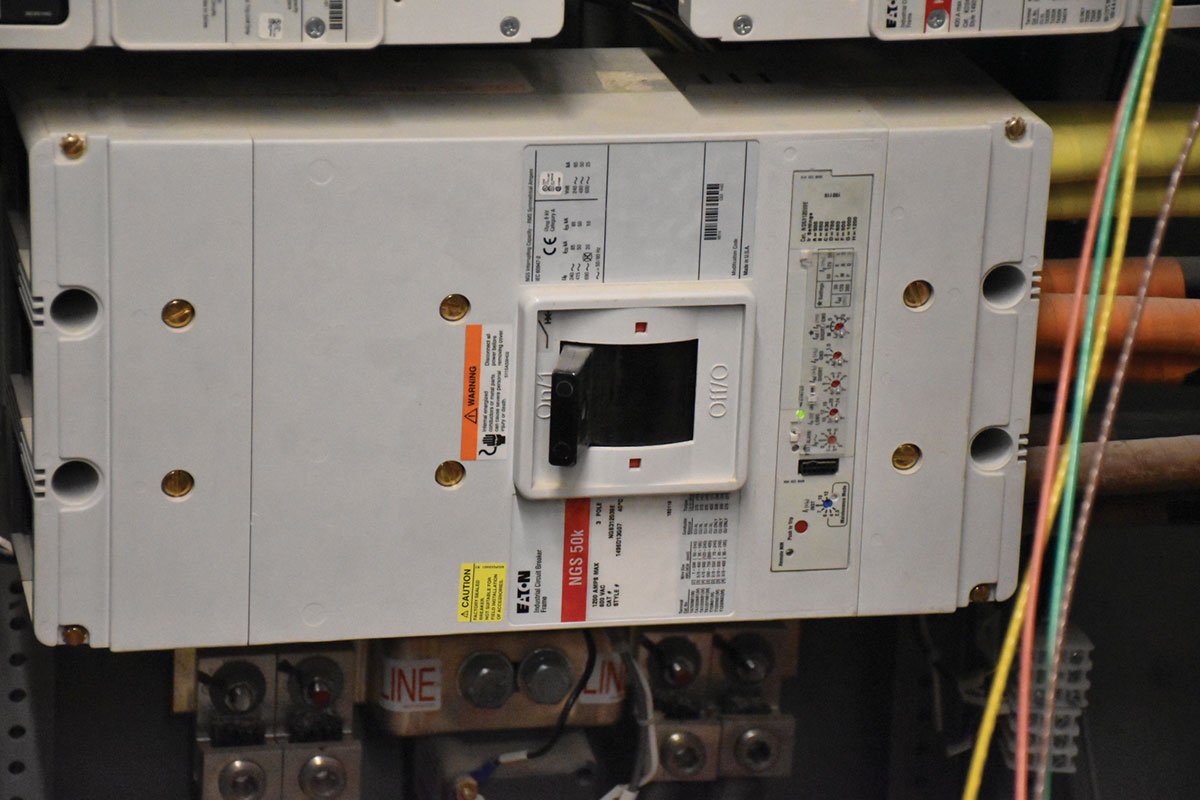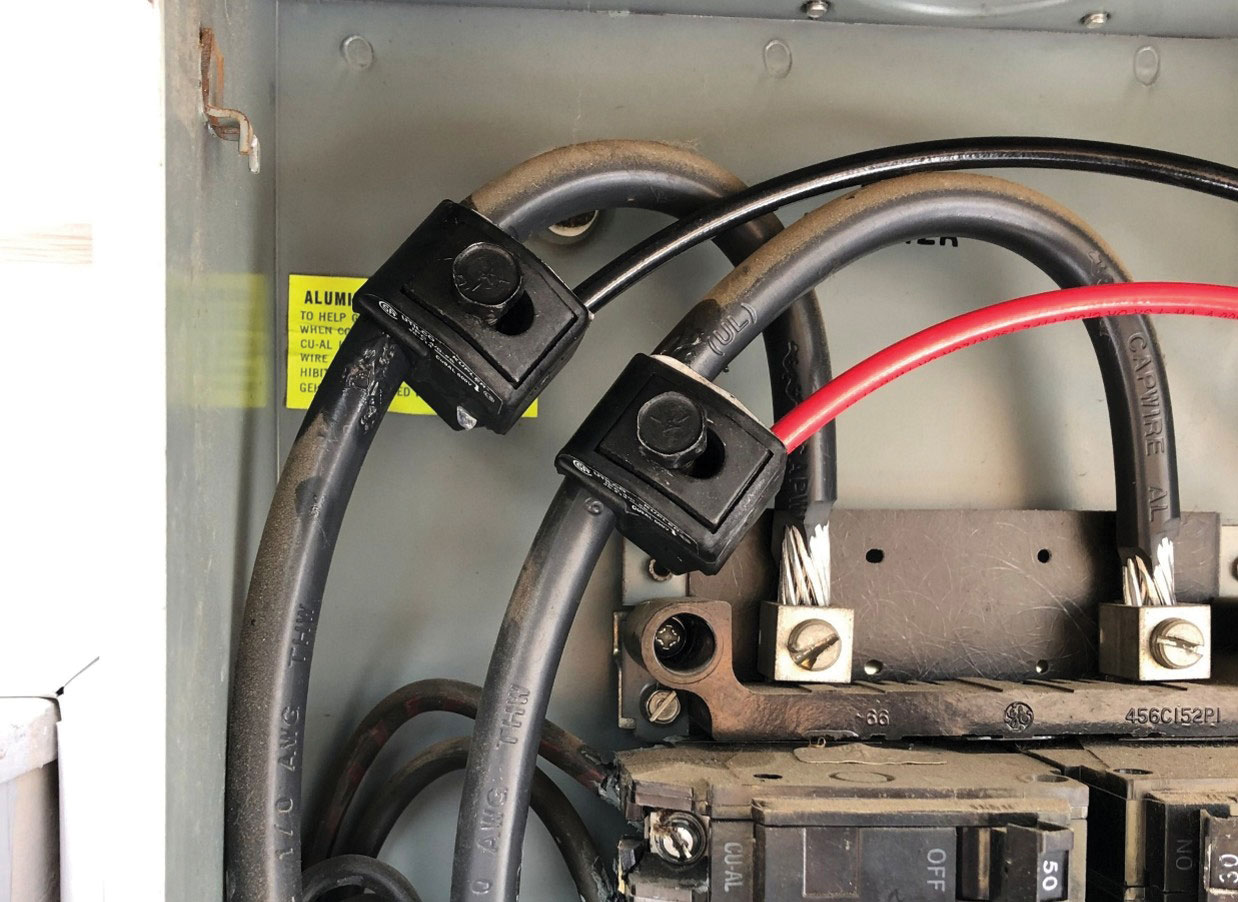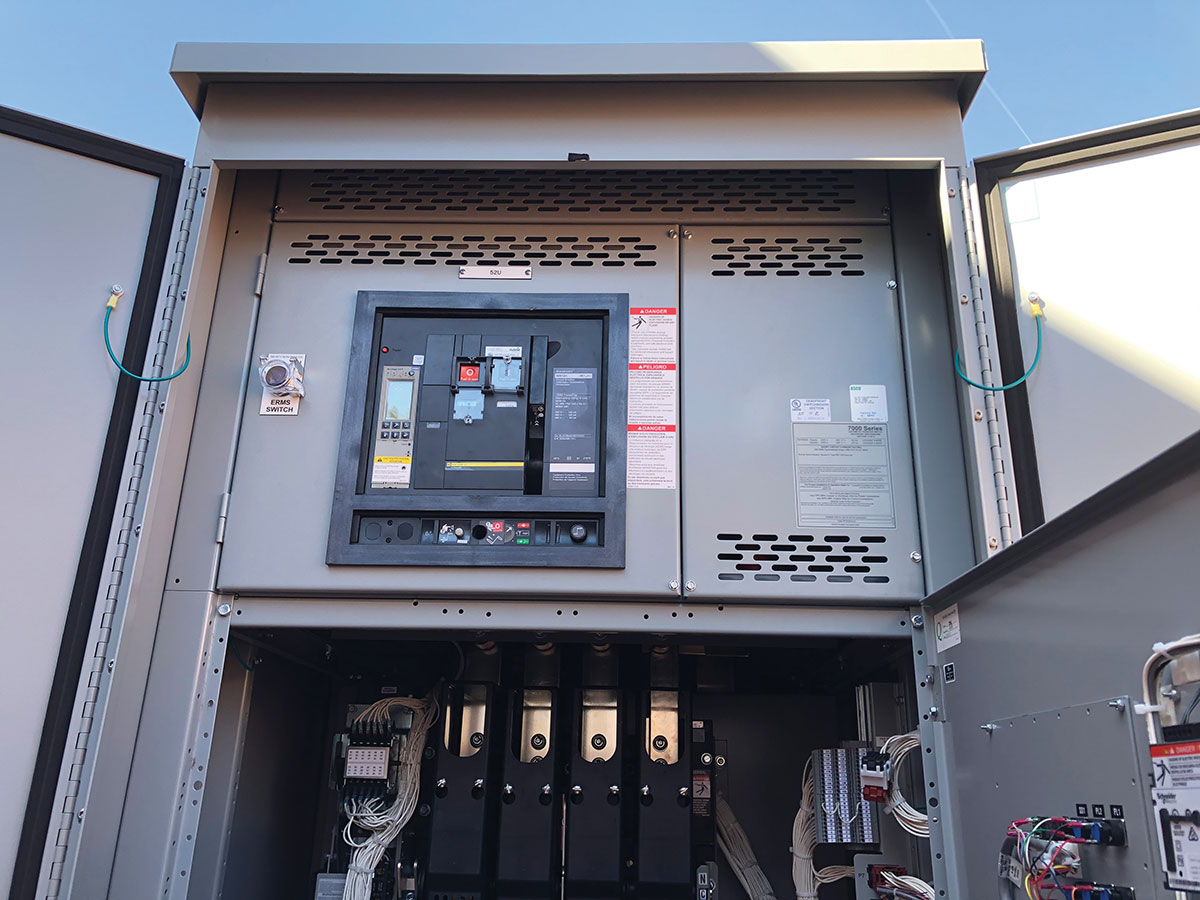Background
Subsection 3.2.7. of the NBCC mandates emergency power for specific systems and equipment that must continue to function in the event that a regular power to these systems and equipment is interrupted.
These specific systems and equipment are defined in Section 46 of the CE Code as “Life safety systems” as follows: “Life safety systems — emergency lighting and fire alarm systems that are required to be provided with an emergency power supply from batteries, generators, or a combination thereof, and electrical equipment for building services such as fire pumps, elevators, smoke-venting fans, smoke control fans, and dampers that are required to be provided with an emergency power supply by an emergency generator in conformance with the National Building Code of Canada.”
Articles 3.2.7.4. and 3.2.7.8. of the NBCC state that for emergency lighting and for fire alarm systems (including voice communication where voice communication is required to be provided as a part of a fire alarm system by Article 3.2.6.8.), such emergency power source could be represented by batteries or generators. These NBCC articles further specify a minimum period of time during which such power supply sources must automatically supply the connected loads. This minimum required period varies from 5 minutes for a building allowed by the NBCC to be equipped with a single zone fire alarm system up to 2 hours, where such systems and equipment are installed in a high building.

Photo 1. Building exhaust fan system
Although Articles 3.2.7.4. and 3.2.7.8. of the NBCC allow an option of using batteries or emergency generators as the emergency power supply source for emergency lighting and fire alarm systems, Sentence 3.2.7.9.(1) of the NBCC specifically mandates use of an emergency generator capable to operate under a full load for not less than 2 hours as an emergency power supply source for a very particular life safety equipment as follows:
“3.2.7.9. Emergency Power for Building Services
(1) An emergency power supply capable of operating under a full load for not less than 2 h shall be provided by an emergency generator for
a) every elevator serving storeys above the first storey in a building that is more than 36 m high measured between grade and the floor level of the top storey and every elevator for firefighters in conformance with Sentence (2),
b) water supply for firefighting in conformance with Article 3.2.5.7., if the supply is dependent on electrical power supplied to the building,
c) fans and other electrical equipment that are installed to maintain the air quality specified in Article 3.2.6.2.,
d) fans required for venting by Article 3.2.6.6., and
e) fans required by Clause 3.2.8.5.(1)(c) and Article 3.2.8.8. in buildings within the scope of Subsection 3.2.6”.
The NBCC also mandates protection of certain electrical conductors supplying power to the equipment that is identified as part of “Life safety systems” (i.e., of conductors that supply power to the equipment required to be provided by the NBCC with the emergency power supply) and protection of certain electrical conductors supplying power to the equipment that is not specifically identified as part of “Life safety system.”
Thus, the subject of protection of conductors against exposure to fire has generated some confusion in respect to the following:
1. Conductors supplying what equipment should be protected? (i.e., does the NBCC requirement include conductors supplying power to mechanical exhaust systems — to remove air from interconnected floor spaces, conductors supplying power to lifts for disabled persons in low and high buildings, conductors supplying every elevator in a high building, conductors supplying a make-up or exhaust air handling systems in low and high buildings, etc.?)
2. What is the extent of the required fire protection of conductors? (i.e., are these conductors required to be protected from the normal or emergency supply, to the equipment being served or to the last distribution panel supplying such equipment, to the devices of a fire alarm system located on a floor, etc.?)
3. What are the means to provide protection of conductors against exposure to fire (i.e., are these conductors required to be enclosed in a shaft enclosure of at least 2 h fire resistance construction, or to be provided with a minimum cover over the raceway of at least 100 mm in concrete, floor slabs or walls that form part of fire separations, or to be circuit integrity cables that conform to the ULC S139 circuit integrity test and that are marked “CIR ULC S139 2 h” in addition to a certification monogram?).
4. Whether such fire protection of conductors is, in fact, required for 1 h or for 2 h?
The following discussion and conclusion on this subject intends to clarify this subject.
Discussion
Article 3.2.7.10. of the NBCC mandates protection of conductors against exposure to fire as follows:
“3.2.7.10.Protection of Electrical Conductors
1) The protection of electrical and emergency conductors referred to in Clauses (a) to (c) shall conform to the requirements stated in Sentences (2) to (8):
a) electrical conductors located within buildings identified in Article 3.2.6.1. serving
i) fire alarms,
ii) emergency lighting, or
iii) emergency equipment within the scope of Articles 3.2.6.2. to 3.2.6.8.,
b) emergency conductors serving fire pumps required to be installed under Article 3.2.5.18., and
c) electrical conductors serving mechanical systems serving
i) areas of refuge identified in Clause 3.3.3.6.(1)(b), or
ii) contained use areas identified in Clauses 3.3.3.7.(4)(a) and (b).
2) Except as otherwise required by Sentence (3) and permitted by this Article, electrical conductors that are used in conjunction with systems identified in Sentence (1) shall
a) conform to ULC-S139, “Fire Test for Evaluation of Integrity of Electrical Cables,” including the hose stream application, to provide a circuit integrity rating of not less than 1 h, or
b) be located in a service space that is separated from the remainder of the building by a fire separation that has a fire-resistance rating not less than 1 h.
3) Electrical conductors identified in Clause (1)(c) shall
a) conform to ULC-S139, “Fire Test for Evaluation of Integrity of Electrical Cables,” including the hose stream application, to provide a circuit integrity rating of not less than 2 h, or
b) be located in a service space that is separated from the remainder of the building by a fire separation that has a fire-resistance rating not less than 2 h.
4) The service spaces referred to in Clauses (2)(b) and (3)(b) shall not contain any combustible materials other than the conductors being protected.
5) Except as stated in Sentences (7) and (9), the electrical conductors referred to in Sentence (1) are those that extend from the source of emergency power to
a) the equipment served, or
b) the distribution equipment supplying power to the equipment served, if both are in the same room (see Appendix A).
6) If a fire alarm transponder or annunciator in one fire compartment is connected to a central processing unit or another transponder or annunciator located in a different fire compartment, the electrical conductors connecting them shall be protected in accordance with Sentence (2).
7) Fire alarm system branch circuits within a storey that connect transponders and individual devices need not conform to Sentence (2). (See Appendix A.)
8) Except as permitted in Sentence (9), if a distribution panel supplies power to emergency lighting, the power supply conductors leading up to the distribution panel shall be protected in accordance with Sentence (2).
9)Conductors leading from a distribution panel referred to in Sentence (8) to emergency lighting units in the same storey need not conform to Sentence (2)”
As it could be seen from this NBCC requirement, except for the conductors supplying electrically connected fire pumps required to be installed in any building (and not just in a high building), onlythe conductors that:
(a) supply life safety systems required to be provided with the emergency power supply (regardless of the source), and
(b) are installed in a high building, must be protected against exposure to fire for a period of not less than 1 h.
It could be also seen from this NBCC requirement that in accordance with Sentence (1)(c) above, conductors supplying such equipment as fans providing air supply to the area of refuge compartments that contain operating rooms, ICUs, delivery rooms or recovery rooms in a hospital, or conductors supplying pressurization fans required only in unsprinklered contained use areas of a jail [i.e., equipment that is not specifically identified as being a part of a “Life safety system” by the CE Code and that is not specifically listed by Sentence 3.2.7.9.(1) as being required to be provided with the emergency power supply by an emergency generator] must be protected against exposure to fire for a period of not less than 2 h. It should be noted that the requirement for an emergency generator in this case [as specified by Sentence 3.2.7.10.(1)(c) of the NBCC], would be mandated by Z32 or by the correctional facilities guidelines.
Sentence 3.2.7.10.(5) states that conductors supplying various equipment comprising “Life safety systems” and the equipment listed in Sentence (1)(c) must be protected from the source of the emergency power supply (i.e. from batteries or emergency generator) up to the equipment being served. This Sentence clarifies that only conductors supplying elevators in a high building that is more than 36 m high measured between grade and the floor level of the top storey – must be protected against exposure to fire, as only elevators in a building higher than 36 m are required by Article 3.2.7.9. to be provided with the emergency power. Sentences 3.2.7.10.(7) and (9) further clarify that fire protection of conductors connecting fire alarm system devices within a floor or conductors supplying a unit equipment for emergency lighting or remote lamps within a floor – is not necessary, and only “riser” conductors connecting transponders of a fire alarm system with a CACF or a CPU, or riser conductors supplying distribution panels for emergency lighting between floors must be protected against exposure to fire. It should be noted that although Sentence 3.2.7.9.(1) requires emergency power supply to be provided by an emergency generator for pressurization fans in vestibules serving interconnected floor spaces (see article 3.2.8.5.) in a high building, and for mechanical exhaust system – to remove air from an interconnected floor space (see Article 3.2.8.8.) in a high building, fire protection of conductors supplying this particular equipment does not appear to be listed by Article 3.2.7.10., and perhaps this omission was made by the NBCC writers by accident.
Thus, it is strongly recommended to provide fire protection of conductors supplying pressurization fans for vestibules serving an interconnected floor spaces and conductors supplying mechanical exhaust fans from interconnected floor spaces when such interconnected floor spaces are located in a high building.
Finally, it could be also seen from Article 3.2.7.10. that protection of conductors against exposure to fire could be accomplished by placing these conductors in service spaces with fire separation of the appropriate fire resistance rating (and if this option is selected, it must be discussed with the architects), or by specifying a circuit integrity cable that conforms to the fire test specified in the ULC standard S139. It should be noted that use of such circuit integrity cables is mandated not only by the NBCC, but by the CE Code, ULC S524, and by C282. It should be also noted that Rule 46-204 of the CE Code mandates such fire protection of conductors between an emergency generator and other components of the emergency power supply systems (i.e., transfer switch) when such components of the emergency power supply system are located in separate, not adjoining each other fire rated service rooms.
Conclusion
Electrical conductors between an emergency generator and the following electrical equipment installed in a high building must be protected against exposure to fire for a period not less than 1 h:
1. Pressurization/smoke control fans and dampers required in accordance with Sentence 3.2.6.2.(2) of the NBCC (to control smoke in exit stairs below grade);
2. Pressurization/smoke control fans and dampers required in accordance with Article 3.2.6.3. of the NBCC (in vestibules between a high building and any other building);
3. Every elevator serving storeys above the first storey and that is installed in a high building that exceeds36 m in building height and every fire fighter elevator in a high building;
4. Every exhaust fan installed in a high building and that is used as a smoke venting fan in accordance withArticle 3.2.6.6. of the NBCC (as venting means to aid firefighters);
5. Pressurization/smoke control fans and dampers required in accordance with Article 3.2.8.5. of the NBCC (in vestibules serving an interconnected floor space in a high building);
6. Mechanical exhaust system required in accordance with Article 3.2.8.8. of the NBCC (to remove air from an interconnected space in a high building).
Electrical conductors between an emergency generator and the following electrical equipment must be protected against exposure to fire for a period not less than 2 h (regardless whether it is a high building or not):
1. Pressurization fan installed in an area of refuge constructed in a hospital in accordance with Article 3.3.3.6. of the NBCC (in fire compartments that contain operating rooms, delivery rooms or ICUs).
2. Pressurization fan installed in a contained use area in accordance with Article 3.3.3.7. of the NBCC (in unsprinklered buildings only).
Electrical conductors between an emergency generator and each electrically connected fire pump – must be protected against exposure to fire for a period not less than 1 h (regardless whether it is a high building or not): Note: communication conductors between the generator and the transfer switches are also required to be protected against exposure to fire.
Electrical conductors between an emergency power supply source (from batteries or an emergency generator) and the following equipment installed in a high building must be protected against exposure to fire for a period not less than 1 h:
1. Fire alarm system control units (except for the control units provided with integral emergency power supply by means of batteries);
2. Fire alarm system transponders or annunciators;
3. Fire alarm system CACF;
4. Distribution panels supplying emergency lighting feeders and circuits to the emergency lighting/remote lamps located on various floors.
Notes: (a) riser conductors between FAS equipment indicated in items 1 – 3 above are also required to be protected against exposure to fire;
(b) fire alarm system conductors within a storey that connect transponders with individual devices and branch circuit conductors between a distribution panel that supply emergency lighting units or remote lights located in the same storey do not have to be protected against exposure to fire;
(c) communication conductors between the fire alarm system transponders, control units and CACF installed in different fire compartments of a high building are also required to be protected against exposure to fire.
Conductors that are deemed to be protected against exposure to fire by conforming to the ULC S139 fire test are the conductors that are marked: Circuit Integrity Rating (letters “CIR” 2 h ULCS139)
Note: A typical MI cable or other available circuit integrity cable on the market (i.e., “Draka,” Lifeline,” etc.) with the above referenced marking on the cable outer jacket is deemed to be considered as being protected against exposure to fire for 2 h in accordance with Clause 6.1A of ULC S139. Note: Electrical designers and electrical contractors may choose means of protection of electrical conductors against exposure to fire by placing these conductors in service spaces with the fire resistance rating of at least 1 h, and when such means of fire protection are selected, these means must be coordinated with the architects and general contractors accordingly.
And as usual, local authorities with jurisdictional power for enforcing protection of electrical conductors against exposure to fire must be consulted during the design and installation stages.














Find Us on Socials